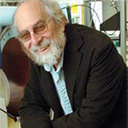Tissue hypoxia during bacterial sepsis is attenuated by PR-39, an antibacterial peptide.
Mo kle
Abstrè
Endotoxin (a lipopolysaccharide (LPS) component of the Gram negative bacterial cell wall) induces sepsis in laboratory animals and is the cause of septic shock in patients. Tissues often develop necrotic regions, particularly in kidney and liver, thought to be directly the result of endotoxin-induced release of nitric oxide (NO). These studies investigated the potential of PR-39, an antibacterial peptide, as an alternative treatment for sepsis. Our rationale for these experiments was based on the knowledge that PR-39 inhibits the superoxide-producing NADH/NADPH-oxidase system, and also inhibits NOS. In a mouse model of sepsis, we carried out EPR measurements of liver pO2 and NO simultaneously in vivo. Physiological parameters were also measured in these animals (blood pressure, heart rate). NO levels in blood were measured by EPR analysis of red blood cell nitrosyl-hemoglobin. We found PR-39 alleviated endotoxin-induced liver hypoxia 6 hrs after treatment. Tissue NO was higher in the PR-39 + LPS group compared to LPS alone. Circulating levels of NO were the same in these groups. Taken together, these results suggest PR-39 is effective in improving survival following a septic episode. The exact mechanism is unclear, but increased NO as a result of decreased superoxide production seems to play an important role in alleviating tissue hypoxia.


